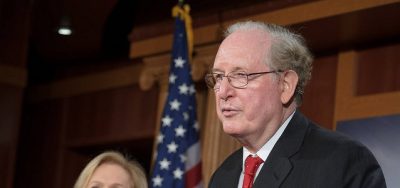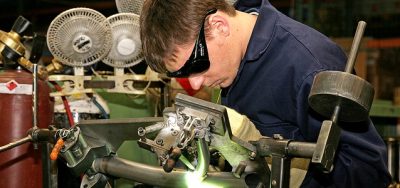High Skilled Labor

Fueling the Recovery
How High-Skilled Immigrants Create Jobs and Help Build the U.S. Economy With the U.S. economy still recovering, it may seem counterintuitive to believe that any industry would benefit from having more workers. But that is precisely the case when it comes to those industries which depend upon highly skilled workers. The United States has long faced a dilemma in this respect: the U.S. economy is, in general, absorbing more high-skilled professionals than the U.S. educational system produces or that are available in our workforce. That is one reason so many highly skilled workers in the United States are immigrants. For instance, in “STEM” occupations (science, technology, engineering, and mathematics), the foreign-born account for 26.1 percent of workers with PhDs and 17.7 percent of those with master’s degrees. However, arbitrary limits imposed by the U.S. immigration system, particularly the inadequate supply of green cards and H-1B visas, have restricted the ability of the U.S. to compete in the global battle for talent and ideas. Given that highly skilled professionals tend to create jobs through their innovative work, such limits are economically self-defeating. High-skilled immigrant workers create new jobs. Read More

Rebuilding Local Economies
Innovation, Skilled Immigration, and H-1B Visas in U.S. Metropolitan Areas Although immigration policy is debated at the national level, its impact is most often felt in local and regional communities. This is certainly true for the H-1B program, which is routinely studied at the national level, but cannot be fully understood without driving down to examine the role of H-1B workers at the metropolitan and local levels. New research at this more specific level of analysis suggests that current H-1B policies must be made both flexible and nuanced. There is no “one size fits all” approach to the recruitment, hiring, and retention of high-skilled foreign workers. As lawmakers consider changes to the H-1B program, including the creation of a High Skilled Jobs Demand Index, it is essential to remember that demand for H-1B workers in many metropolitan areas is high, varies by industry, and has ripple effects throughout a regional economy. Thus, predicting and calculating the need for H-1B workers requires an understanding of the dynamics at the metropolitan level. Metropolitan Area Demand for High-Skilled Workers is High, Especially in Innovation Industries Innovation-intensive metropolitan areas tend to have higher rates of patenting, lower unemployment rates, and higher demand for high-skilled workers since patenting growth is correlated with job growth, population growth, and increases in educational attainment. Read More

The Important Role of Immigrants in America’s Innovation Economy
This week, the U.S. Senate Committee on Commerce, Science, and Transportation weighed in on immigration reform with a hearing on the role of immigrants in America’s innovation economy. Remarks from Sens. Rockefeller (D-WV) and Thune (R-SD) noted the contributions of immigrant innovators and entrepreneurs. Immigrants in the United States were named as inventors or co-inventors on 25.6 percent of international patent applications filed from the U.S. in 2006. Furthermore, temporary workers and permanent residents made contributions to over half of the international patents filed by several large, multi-national companies. Temporary and permanent foreign-born workers represent at least 24 percent of the nation’s scientists and 47 percent of engineers with doctoral degrees. Read More

Keeping U.S. High-Skilled Temporary Worker Visa Programs Workable
When analyzing higher-skilled guest worker visa programs, such as the H-1B and L-1 programs, critics often fail to acknowledge the very different and important purposes that these programs were designed to serve, and the complicated requirements already in place to protect against abuse or exploitation. There is no denying that we can and should improve these programs and the strategies used to enforce them. However, given the well-established economic benefits of these programs, and the challenges employers face finding highly skilled workers, particularly in technical fields, it is essential that any proposed reforms not impose restrictions that may make these programs completely unworkable. Read More

Why There Are Not Enough STEM Workers in the U.S. Labor Market
Occasional research, such as a report released last week by the Economic Policy Institute, suggests the U.S. has a sufficient supply of science, technology, engineering, and mathematics (STEM) graduates and workers. However, these conclusions are at odds with a growing number of expert analyses that find the U.S. does in fact face significant challenges in meeting the growing needs of our expanding knowledge-based economy. Here is a sampling of the evidence: Read More

Why There Are Not Enough STEM Workers in the U.S. Labor Market
Occasional research, such as a report released last week by the Economic Policy Institute, suggests the U.S. has a sufficient supply of science, technology, engineering, and mathematics (STEM) graduates and workers. However, these conclusions are at odds with a growing number of expert analyses that find the U.S. does in fact face significant challenges in meeting the growing needs of our expanding knowledge-based economy. Here is a sampling of the evidence: Read More

High-Skilled Immigration and Entrepreneurship in the Senate’s Immigration Bill
On the road to reform, the Senate’s Border Security, Economic Opportunity, and Immigration Modernization Act contains several changes and new provisions for skilled immigration and entrepreneurship. Specifically, the bill provides balanced reforms to the H-1B nonimmigrant visa for high-skilled individuals, various provisions for highly skilled individuals through permanent employment-based immigration, and a new INVEST visa for entrepreneurs. Read More

A Bipartisan Bridge to Prosperity: High-Skilled Immigration Legislation in the 113th Congress
In the spirit of bipartisan immigration reform, a geographically diverse contingent from both chambers of Congress have introduced legislation to strengthen high-skilled immigration and spur economic growth by recruiting and retaining entrepreneurial talent. Research is clear that high-skilled immigrants and immigrant entrepreneurs are a source of strength for America’s economy and innovative competitiveness. Currently, the most common routes for high-skilled immigrants and immigrant entrepreneurs to come to the U.S. include: H-1B visas for “specialty occupations” (which most commonly refers to occupations requiring “the theoretical and practical application of a body of highly specialized knowledge and a bachelor’s or higher degree”), L-1 visas for “intracompany transferees,” O-1A visas for individuals with “sustained national or international acclaim” in the sciences, arts, education, business, or athletics, and E-2 visas for treaty investors, which are available to citizens of countries with treaties of commerce and navigation with the U.S. The three new pieces of legislation include the Immigration Innovation Act of 2013, the StartUp Visa Act of 2013, and the Startup Act 3.0. Immigration Innovation Act of 2013 Read More

LAC Wins Release of H-1B Fraud Documents for AILA
For Immediate Release LAC Wins Release of H-1B Fraud Documents for AILA Washington, D.C.—USCIS released in full the four remaining contested documents in a FOIA lawsuit brought by the American Immigration Council’s Legal Action Center (LAC) and Steptoe & Johnson LLP on behalf of AILA. The… Read More

Always in Demand: The Economic Contributions of Immigrant Scientists and Engineers
With the U.S. economy in the midst of a prolonged slump, it’s hard to believe that any industry would actually benefit from having more workers. But that is precisely the case when it comes to those industries which depend upon highly skilled scientists and engineers. The United States has long faced a dilemma in this respect: the U.S. economy is capable of absorbing more high-tech professionals than the U.S. educational system produces. That is one reason so many U.S. scientists and engineers are immigrants. In “STEM” occupations (science, technology, engineering, and mathematics), the foreign-born account for 26.1 percent of workers with PhDs and 17.7 percent of those with master’s degrees. Even more U.S. scientists and engineers would be immigrants if not for the arbitrary limits imposed by the U.S. immigration system, particularly the inadequate supply of green cards and H-1B visas. Given that STEM professionals tend to create jobs through their innovative work, such limits are economically self-defeating. Immigrant scientists and engineers create new jobs. Read More
Make a contribution
Make a direct impact on the lives of immigrants.
